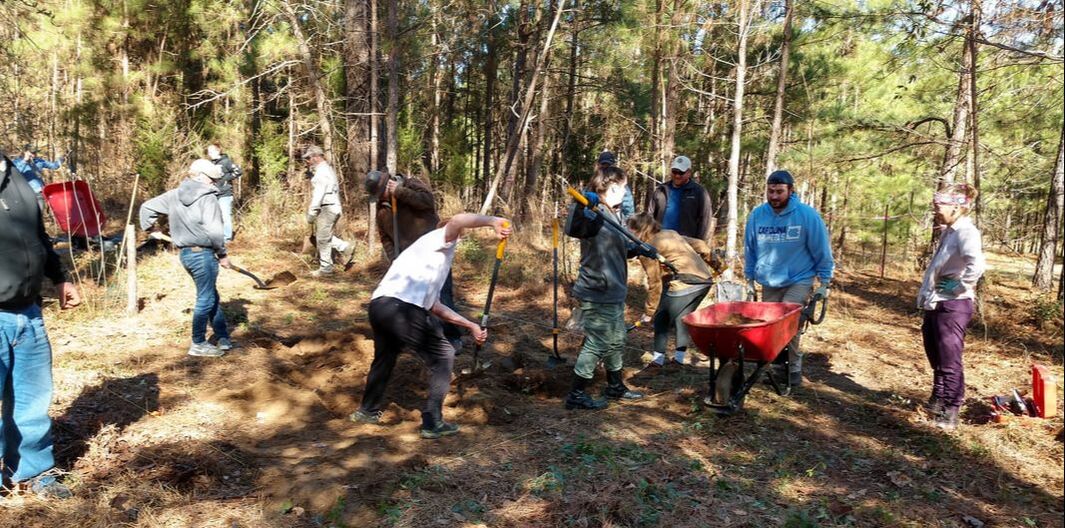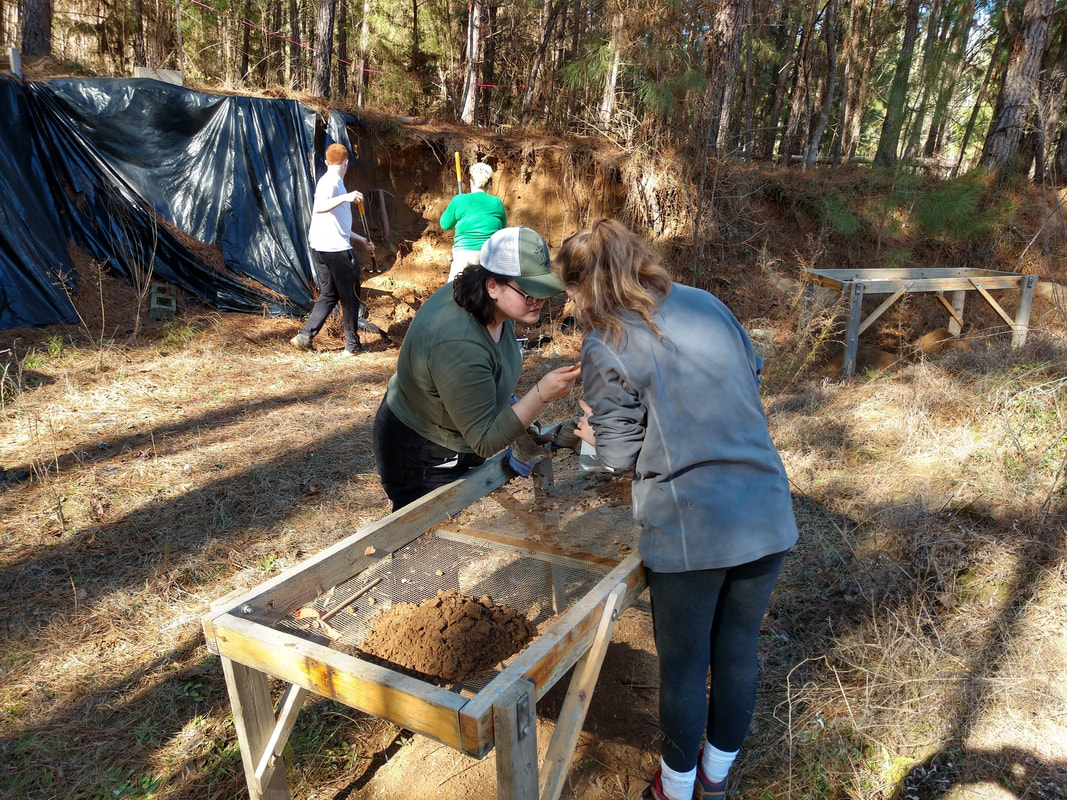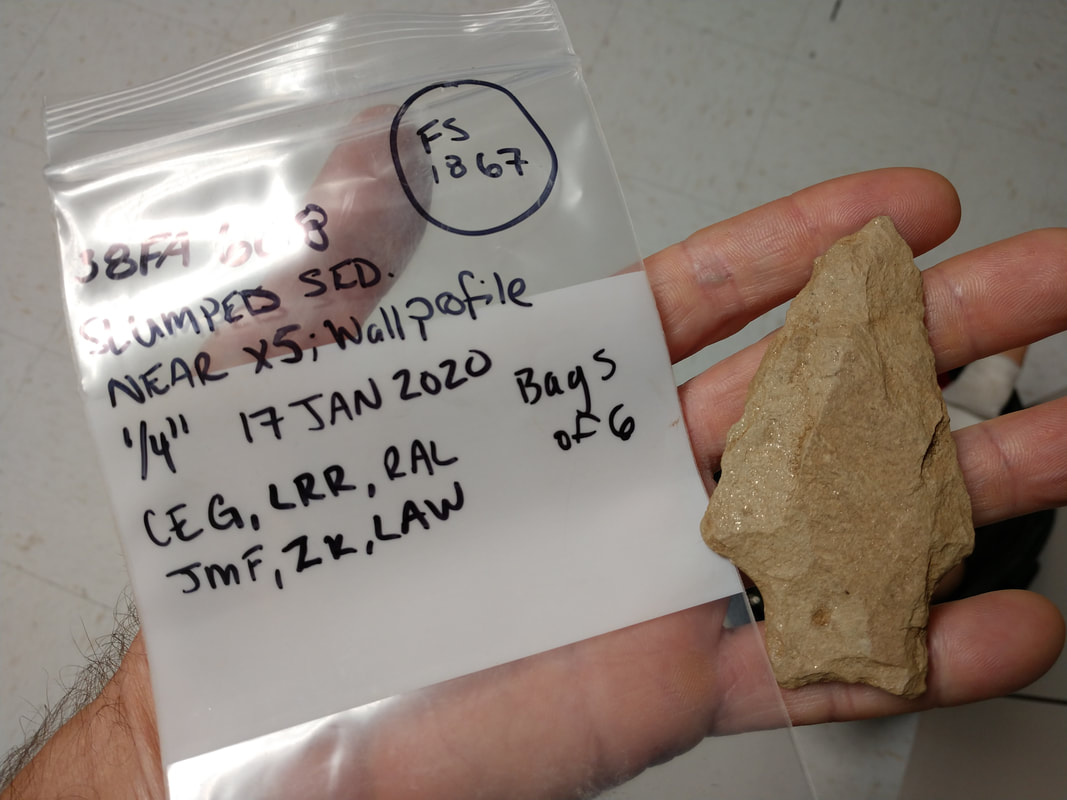We spent the first couple of hours of the field school in the classroom introducing ourselves, going over the syllabus, rounding up forms, and talking about expectations, etc. I gave a presentation on what we've done at the site so far. Then we loaded up the screens and some other equipment and got everyone out to the site by about 10:45.
My main goals for the first day were to: (1) relocate the block and remove a good portion of the backfill from it; and (2) assess and deal with some slumping of the unexcavated/unprotected portion of wall that that occurred since the last field school in 2018.
By the end of the work day on Friday we had reached the floor of Unit 6 in the block. I estimate it will take us at least two more hours to remove the remainder of the backfill from the block.
We're in the process of removing the slumped sediment and screening it. We've recovered a lot of large pieces of FCR that would have originally been in Feature 5 as well as a Savannah River point. The slumped sediments also contained a complicated stamped rim sherd that would have come from above the level of the feature.





 RSS Feed
RSS Feed
